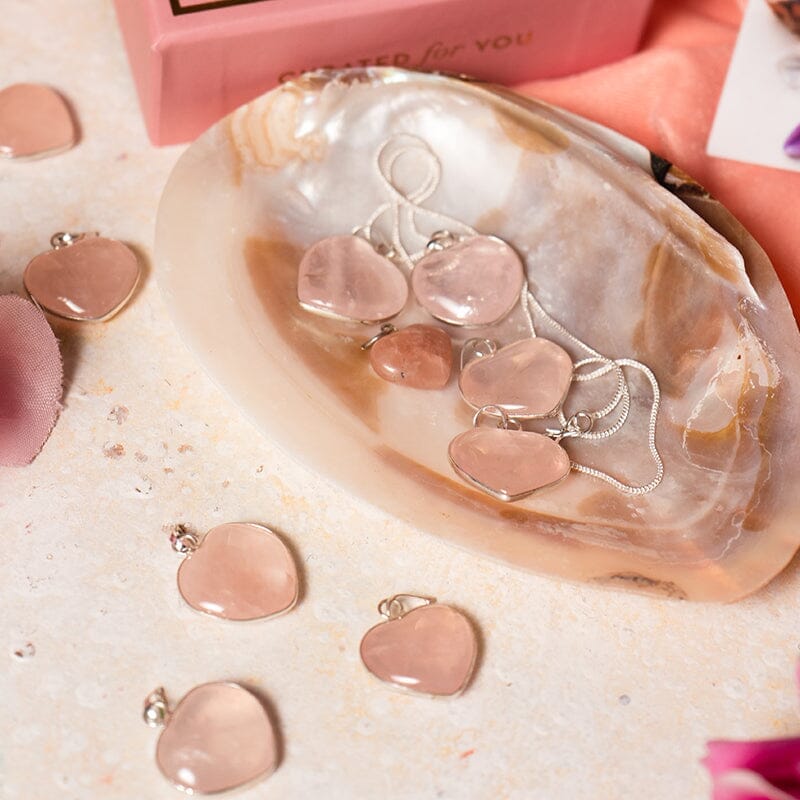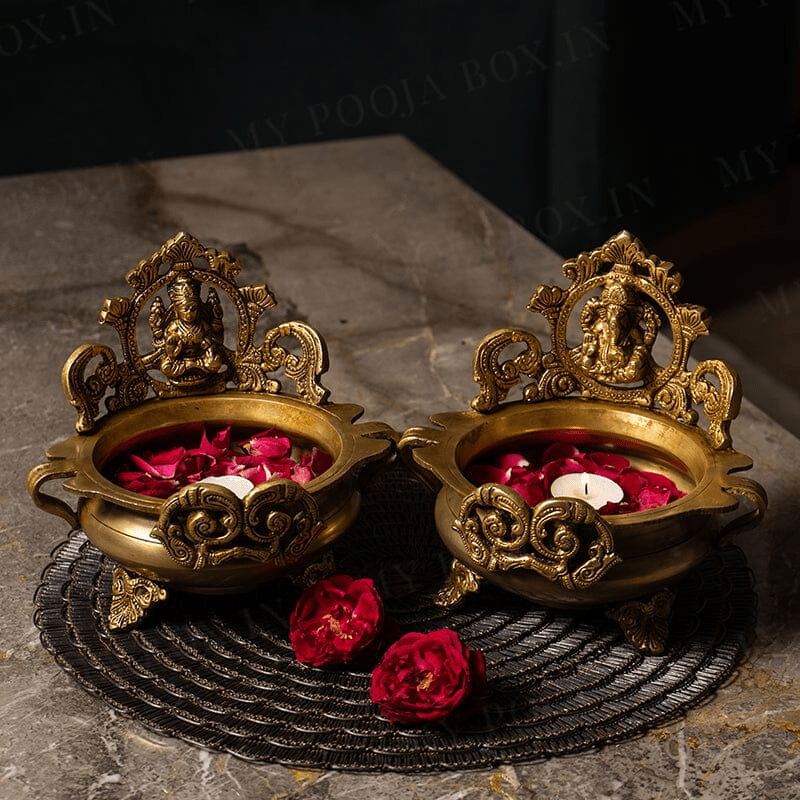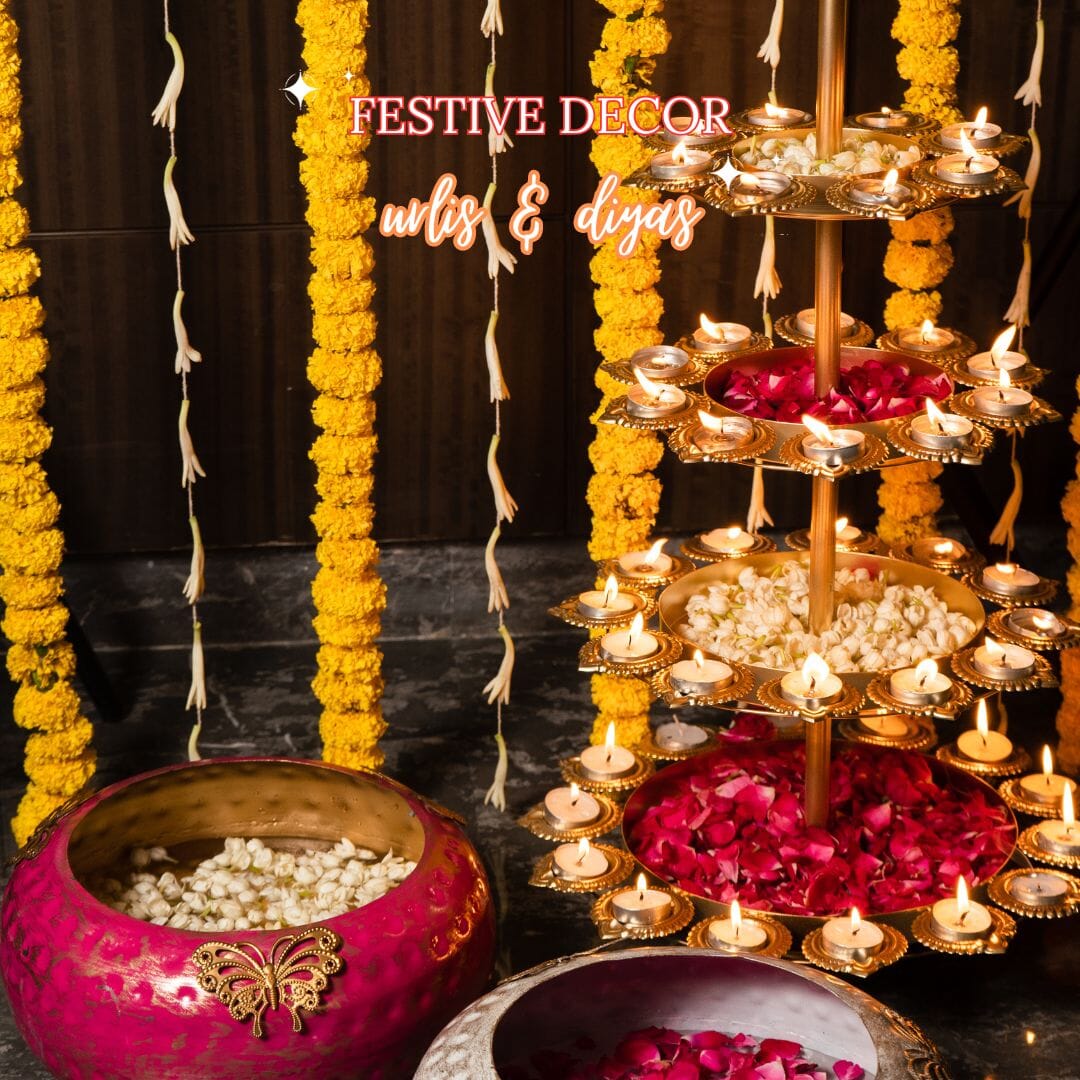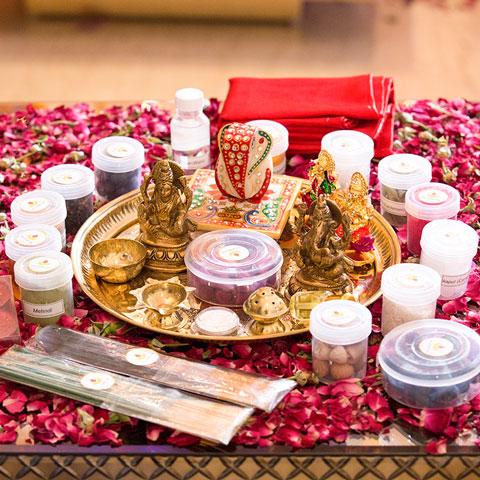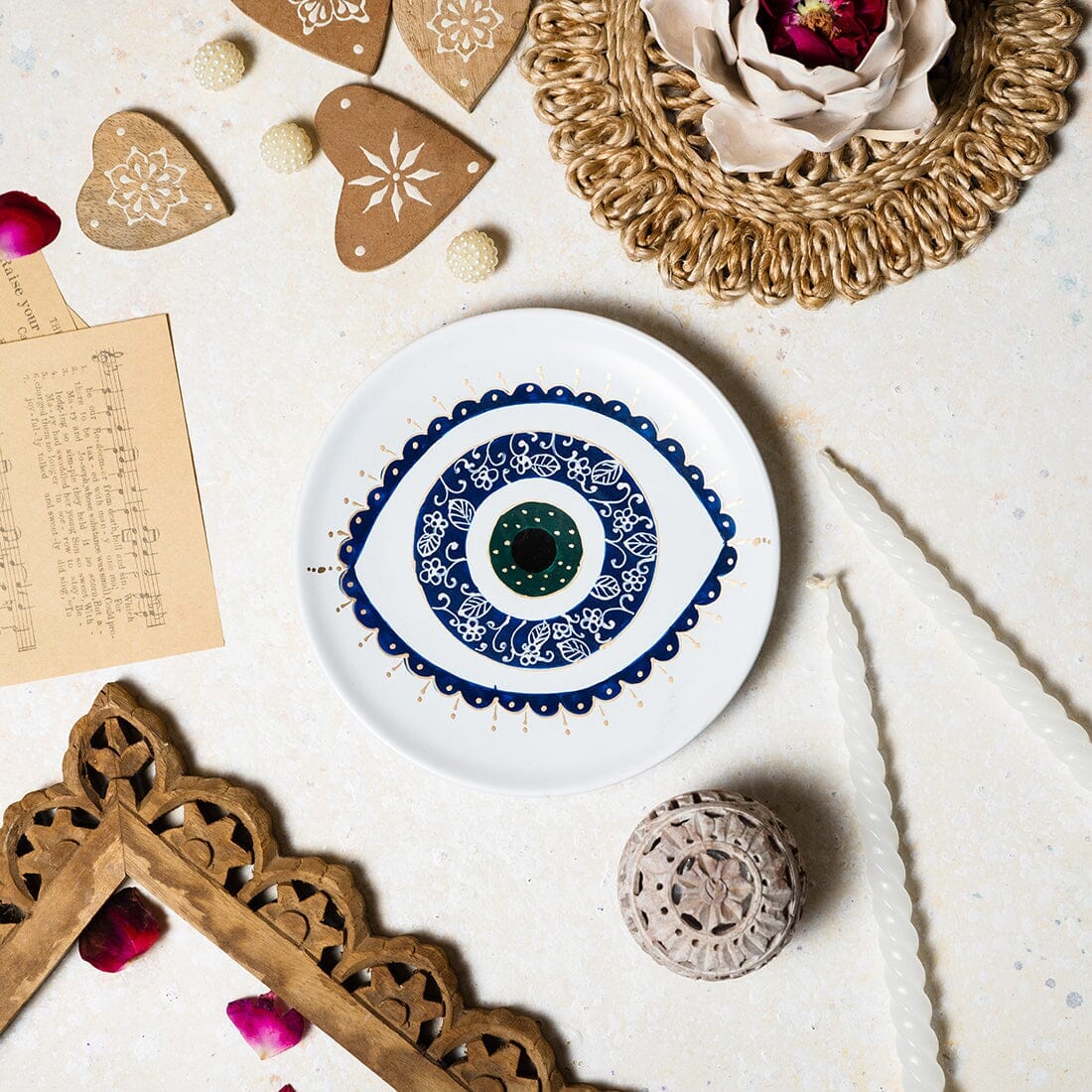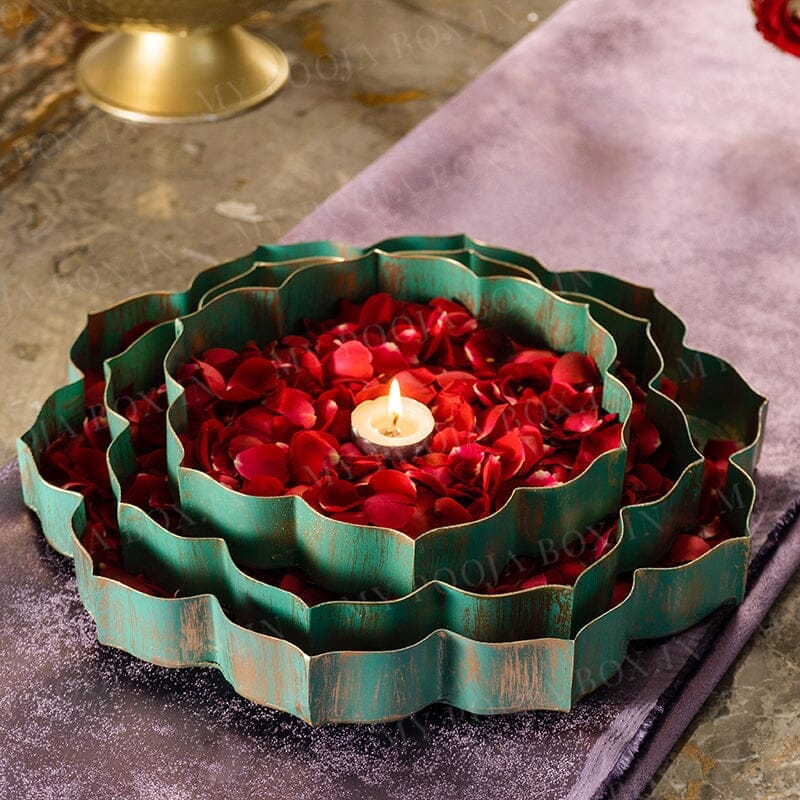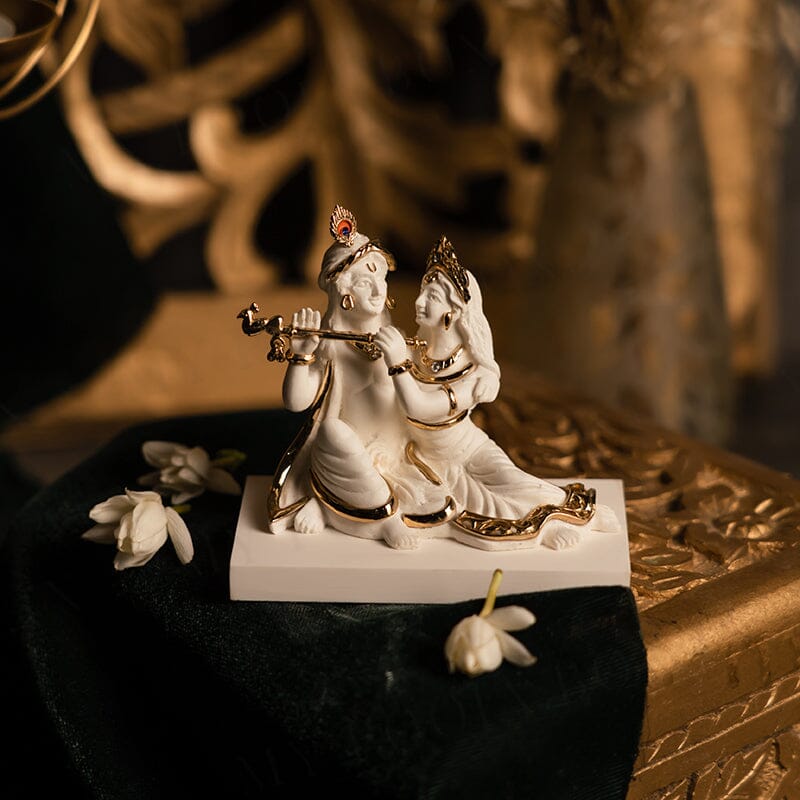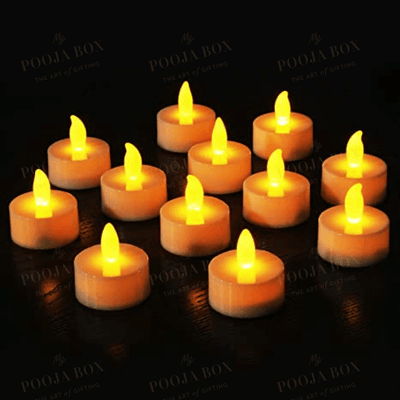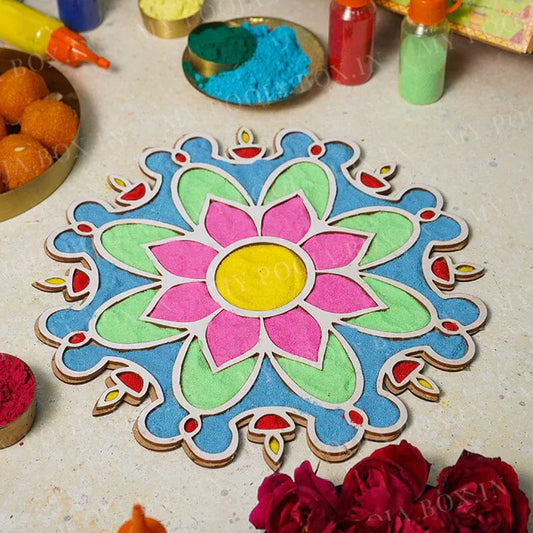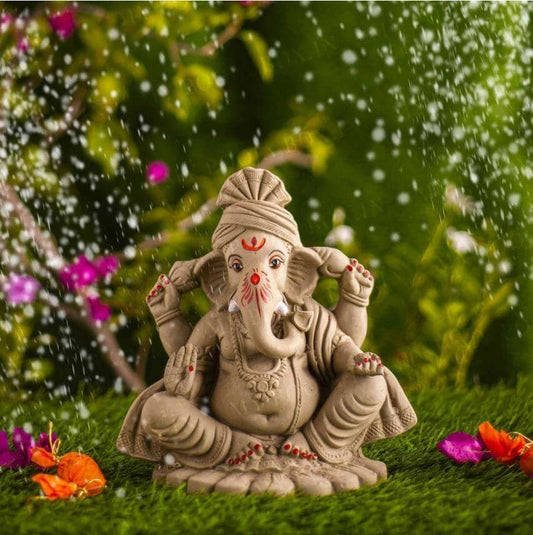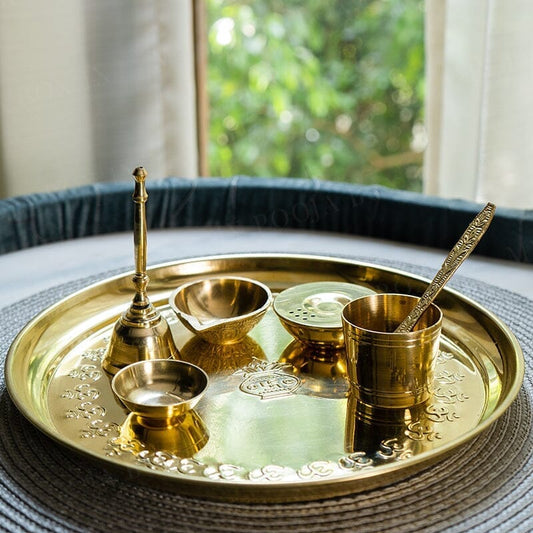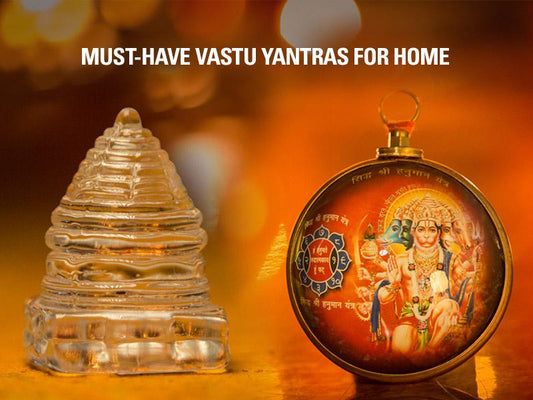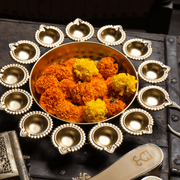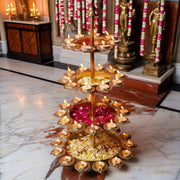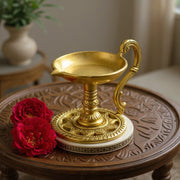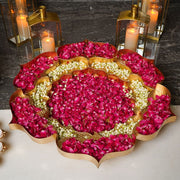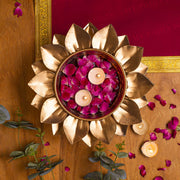Dussehra, also known as Vijaya Dashami, is a Hindu festival that celebrates the victory of Lord Rama over Ravana. This day marks the end of Durga Puja and Navratri celebrations in India. The 10-day event ends with prayers to Goddess Lakshmi for wealth and prosperity for all at home. It was believed that on this day, Goddess Lakshmi would go back to her husband's house after visiting her parents' house during Durga Puja.
On this auspicious occasion, people worship their ancestors by lighting up diyas (lamps). People take part in special pujas or rituals to ensure peace and prosperity for everyone in their family. They give gifts to each other, send sweets among friends, relatives, and family members.
On the auspicious day of Dussehra, the people of Uttar Pradesh celebrate it with great pomp and show by lighting up pandals in their streets. These pandals are beautifully decorated with Rangolis at the entrances, lights inside the mandaps, various weapons used by Lord Rama to fight Ravana placed on display inside the pandals, idols of Goddess Durga on one side and Lakshmi for wealth on another side. People visit these pandals during darshan hours or before puja ends to have a glimpse of this beautiful artwork.
The festival also marks Lakshmi Puja done in some households as part of rituals across India. They believe that Lakshmi is very fond of sweets. So, on the day of Lakshmi Puja, people offer sargi to Goddess Lakshmi. Sargi is a sweet dish used in some traditional rituals, particularly during Diwali pooja among Nepalese communities.
Why Dussehra is it celebrated?
The name Dussehra is derived from the Sanskrit words 'Dasha' meaning ten and 'Hara' meaning demon. Thus, it can be translated to mean "the defeat of 10 demons". The festival culminates with the effigy-burning ceremony called ‘Ravan Vadh’ on the full moon night in October or November.
The effigy signifies Ravana, a mythical king who was killed by Rama (an incarnation of Vishnu), according to a Hindu legend in the Treta Yuga period. The story goes that Rama, his brother Lakshmana and Sita were exiled from their kingdom for 14 years. During this time, Ravana abducted Sita. When the brothers came back to reclaim their kingdom, they defeated Ravana by burning him alive on a pyre made up of dried tree branches with Kala-hemp oil.
Ravana's ten heads represent the nine planets (excluding the Earth) and the sun. Hindus believe that the goddess Durga destroyed all nine planets that represented the evil forces surrounding the earth.Thus, it is believed that the demon Ravana too was not just one person but all evil combined together. So, burning him down signifies victory over evil!
Today, Dussehra is celebrated with great pomp throughout India, especially in northern states like Uttar Pradesh, Bihar, Haryana, etc. Unlike most other festivals where only women are worshipped as goddesses, during this time, both men and women are worshipped as deities.
The effigy of Ravana is usually prepared days before the actual festival by rolling out dough made of maida (refined wheat) and painting on it with mauli (natural colour extracted from plants). The eyes are fashioned out of small pieces of wood dipped in black paint. Only unmarried girls assist in this task as married women are not allowed to handle food items.
On Vijaya Dashami day, after performing an early morning puja, groups of children gather around the fire, pulling strings tied to each hand of the demon's effigy, leading them to surround the pyre where they set it ablaze at around noon time, after some devotional songs accrediting the burning of the 10 headed demon Ravana. This ritual is called 'Shastar vadha'.
The celebration continues for five days in the form of folk songs, dances and fairs which are traditionally known as "Ramlila". The enactment of Rama's tales starts at least 15 to 20 days before the actual festival.
Ravana was not just an ordinary king, but a Brahmin by birth, born into the Pancha-vanshi lineage (those who possess five distinguishing traits). He was also considered very handsome with ten heads! However, when he came under the influence of his stepmother, he started practising black magic and abducting women. Thus, it is believed that the only way to destroy evil lies in destroying him.
Rama is often seen as the ideal son, husband and king. He was very kind hearted and always helped those in need, like a true hero should! Unlike Ravana, who was feared by one and all, Rama earned immense love from his subjects. Hindus celebrate this festival to show their gratitude towards Rama for slaying evil evils with a hope that his exemplary life will be an example for them to follow.
Finally, unlike most other festivals, where only the wealthy attend the festivities, poor people are also invited to large venues to witness what the Gods offer as prasad (food offering)!Women from various homes present delicacies as offerings to God as a token of gratitude for having blessed them with happiness. Perhaps this is also one of the reasons why Dussehra is considered as one of the most important festivals in India!
